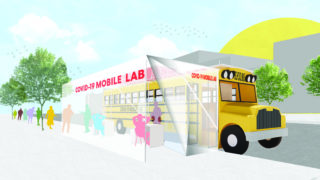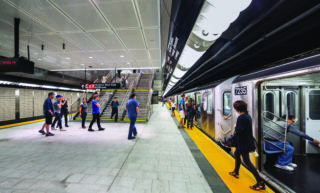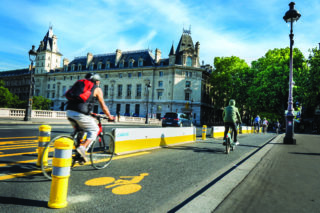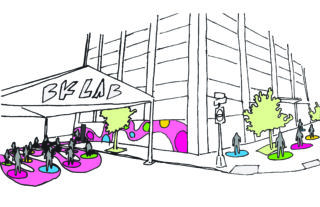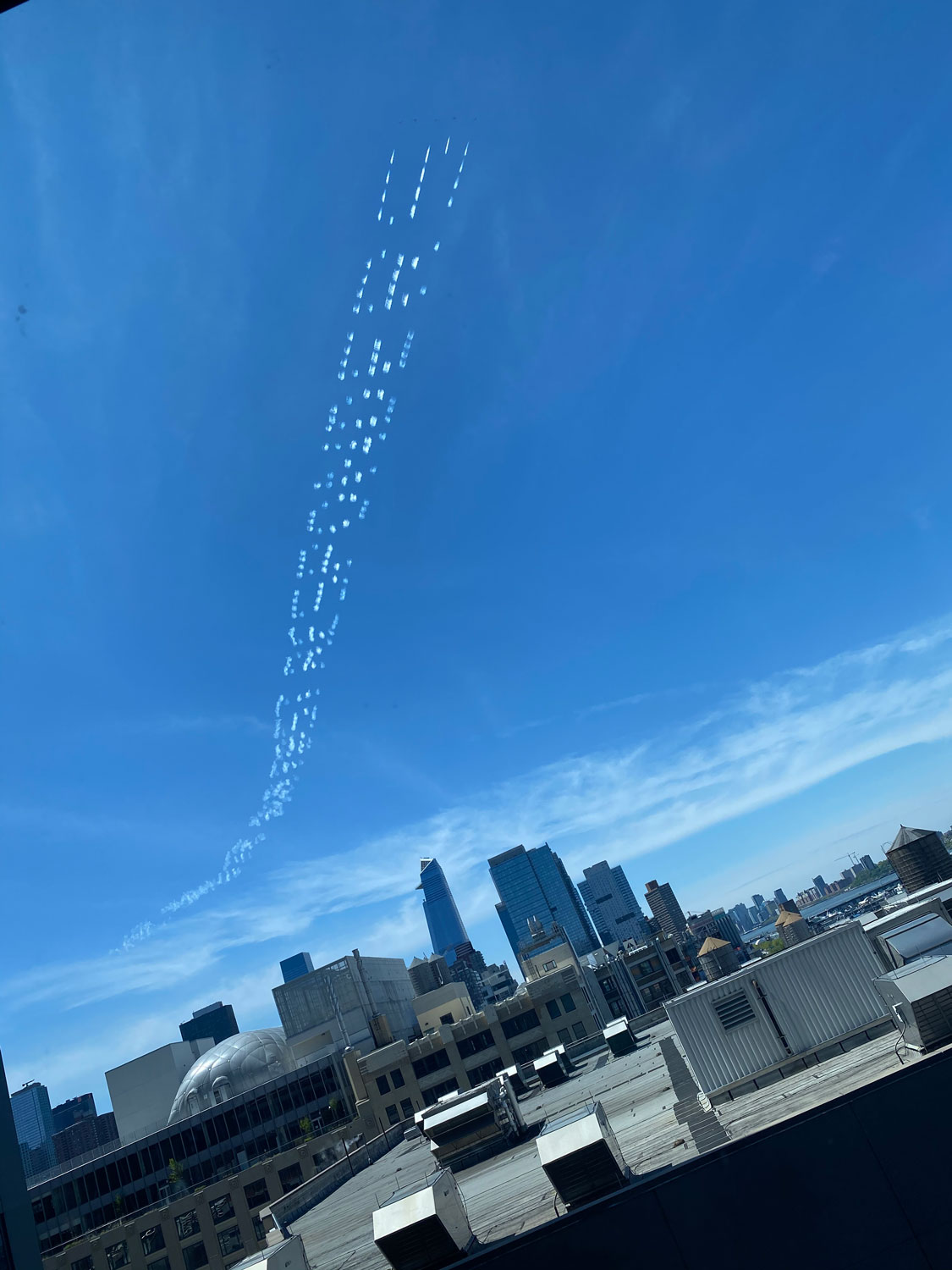
Starting March 22, 2020, New Yorkers were asked to stay inside their homes for the unforeseeable future and refrain from any activity in public space that might compromise the six-foot distance required by the new rules of disengagement. The pandemic exposed and sometimes exacerbated the city’s structural weaknesses and race and class divisions, but also opened up new possibilities and created new liberties, as New Yorkers developed coping strategies to deal with the new normal.
Photography by Margaret Arbanas

A Tale of Two E-Bikes
One of the lockdown’s most visible effects in New York City was the reduced street activity. The temporary suspension of alternate street parking relieved car owners of the obligatory biweekly parking ballet and further reduced car movement. The streets became multiuse arteries shared by all: cars, pedestrians, joggers, bikers, skateboarders, Rollerbladers, e-bikers, scooters, and strollers. Riders of personal electric vehicles of all kinds took advantage of the empty streets, and individual transportation boomed as an alternative to mass transit.
The pandemic became a catalyst for the decade-long battle between the micromobility movement and the city. In 2018 Mayor Bill de Blasio legalized pedal-assisted electric bikes, such as those offered by Citi Bike. Throttle-assisted electric bikes were still illegal, however, and users could be fined $500 and have their bikes confiscated. Throttle-assisted e-bikes are used mostly by food-delivery workers, prompting social justice advocates to criticize the city for discriminating against immigrants. As restaurants and cafés switched to delivery and take-out in mid-March, the city suspended the enforcement against throttle-assisted e-bikes. Within weeks, New York Governor Andrew Cuomo went a step further and legalized the throttle e-bikes, getting us one step closer to democratization of the streets.
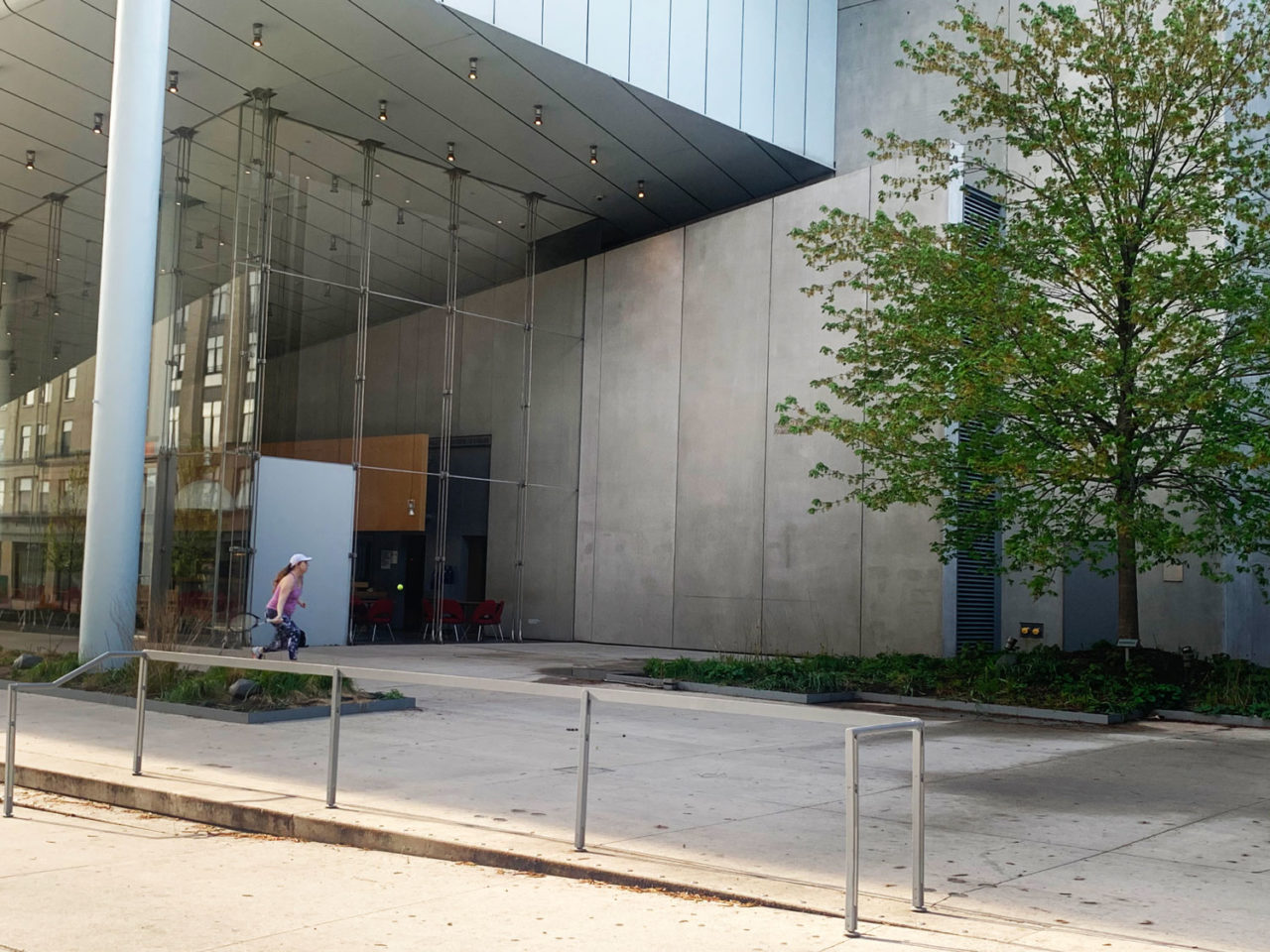
Body Culture
Parks were teeming with activity, as fitness enthusiasts transformed them into outdoor gyms. The increase was driven partly by the mandatory closing of all gyms, fitness centers, and exercise classes in mid-March. By April 2, most basketball hoops at 140 courts in New York’s public parks were taken down. It wasn’t long before tennis courts and backboard walls were locked as well.
Where some saw restrictions, others saw opportunity and resorted to finding a coveted vertical surface on which to practice their forehands and backhands. In absence of museum guards, one creative (and irreverent?) spirit took to the walls of the Whitney Museum, using the kinetic energy of the tennis ball to activate the museum’s surface and reinvent the way we interact with an art institution and the city.
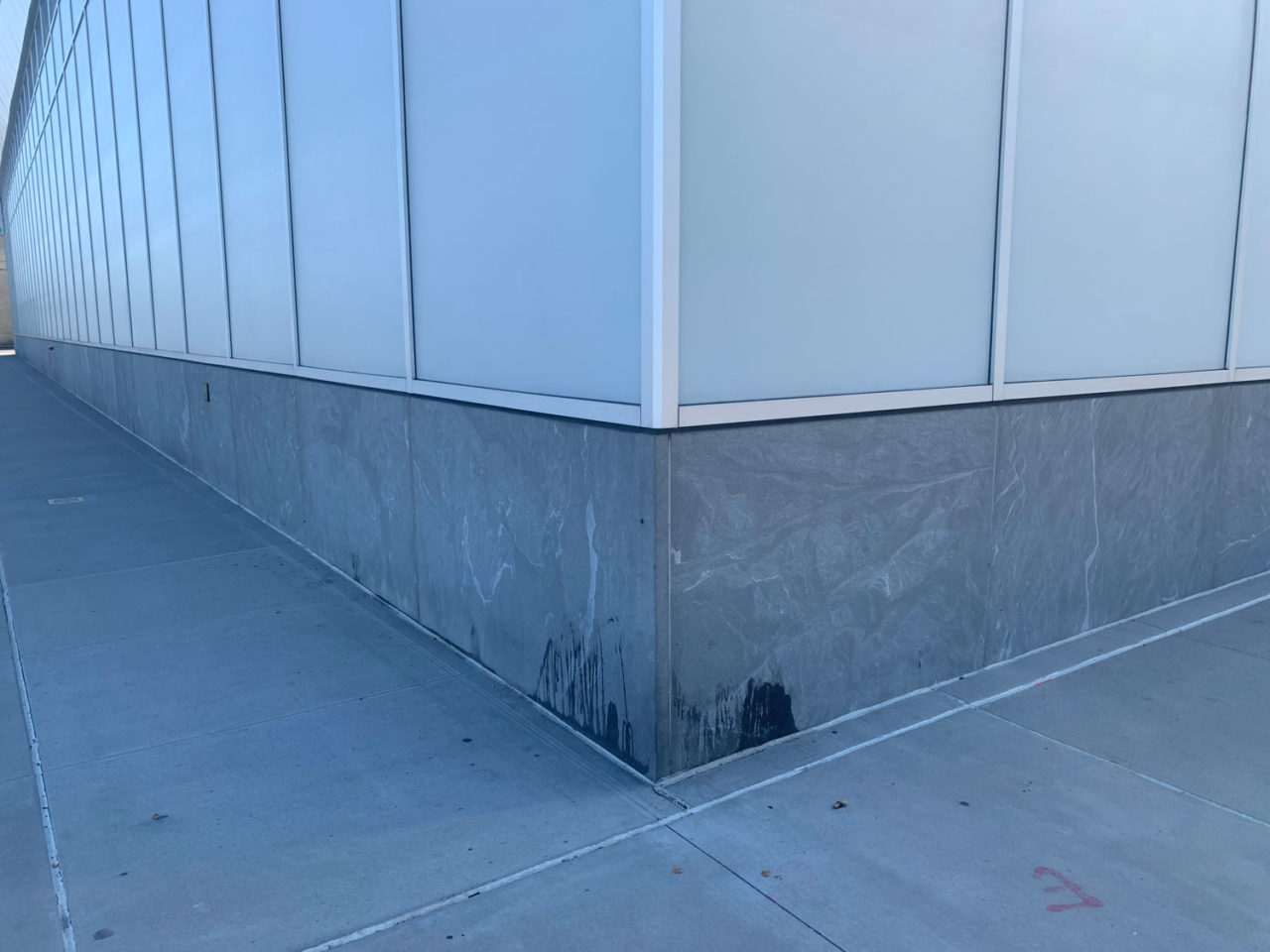
Sold-Out Love
With 63% of Manhattanites single, the number of swipes on the Tinder dating app exploded during lockdown. A new urban phenomenon has become noticeable on the streets, as first-date couples can be seen walking and picnicking six feet apart. When it comes to one of the most popular social activities, the NYC Health Department has issued a “Sex and COVID-19 Fact Sheet,” which urges abstinence: “You are your safest sex partner. Masturbation will not spread COVID-19, especially if you wash your hands (and any sex toys) with soap and water for at least 20 seconds before and after sex.”
As finding solace with another human could land you in the hospital, pets have taken over as the new favorite comfort objects, with the added benefit that they don’t have to like you back and can’t dump you on Zoom (a phenomenon now called “zumping”). Bloomberg News noted that “Muddy Paws Rescue and Best Friends Animal Society are reporting shelters are either all out or almost out of cats and dogs after a surge in applications of as much as 10-fold in the past two weeks.” The American Society for the Prevention of Cruelty to Animals’s New York City chapter webpage states, “We’re sorry, dogs are not available for adoption at this time.”
Unfortunately for pets, the upsurge in adoption coincided with the closure of dog runs. Some dog owners resorted to jumping over other fenced-off areas of parks to let their pets roam leash-free. The building walls around the city received a fair share of a certain activity previously tempered by dog runs. Will the sudden spike in demand for love dwindle once bad times are over?
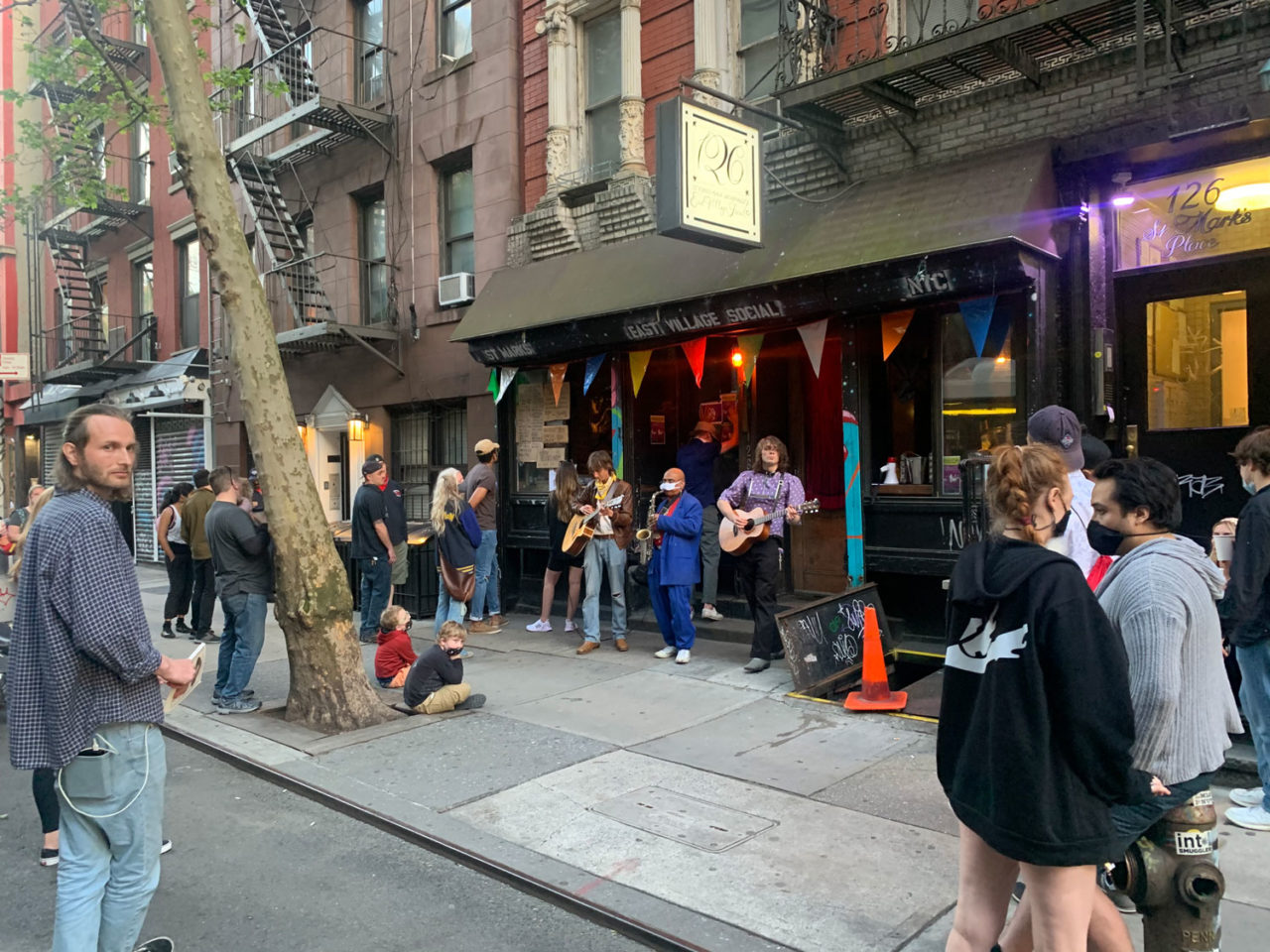
Living in the Bottle
Despite World Health Organization (WHO) officials warning that alcohol consumption is an “unhelpful coping strategy,” U.S. sales of alcoholic beverages rose 55% the week ending March 21. By far the largest increase was by online alcohol businesses, which experienced 243% growth for the same week. In contrast to WHO, Governor Cuomo encouraged alcohol consumption by allowing bars and restaurants in New York City to sell liquor for takeout.
Until 2016, drinking alcohol in public in New York City could land you in jail, a vestige of former Mayor Rudy Giuliani’s “broken windows” policing, which arrested low-level offenders, such as turnstile jumpers and those drinking in public, in an effort to curb major crime. If you are caught drinking in public today and plead guilty, you get away with a $25 fine that you can pay by mail.
With warmer weather encroaching, customers starved for social contact started gathering in front of the bars that were now serving both open- and closed-container alcoholic drinks. The sidewalks transformed into impromptu outdoor bars in defiance of the city’s prohibition of drinking alcohol in public, sometimes to the chagrin of residents in nearby buildings, who would call the NYPD to disband the crowds. If the customers wore face masks and/or practiced social distancing, police would typically turn a blind eye or yell from their police cars for the crowd to disperse—unless you happened to be Black or Latino. Between March 16 and May 5, 80% of 374 summonses issued for social-distancing violations were given to Black or Hispanic people. State Attorney General Letitia James, who demanded the release of the data on who’s receiving summonses and arrests, noted, “The apparent unequal enforcement of social-distancing policies is deeply troubling and deepens the divide between law enforcement and the people they are tasked to protect.”
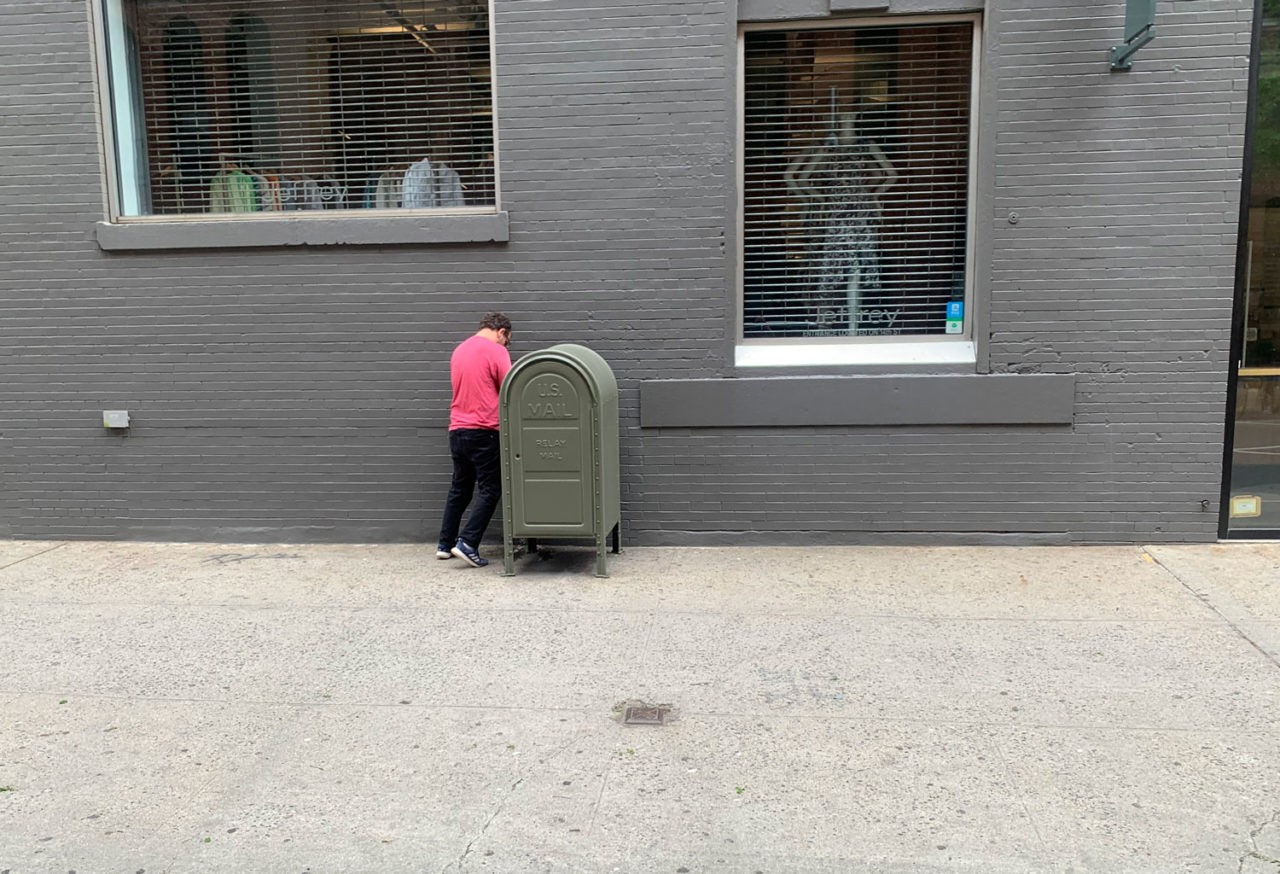
Comfort Zones
COVID-19 exposed the degree to which citizens depend on stores, restaurants, and other privately owned establishments to relieve themselves. Of the nation’s largest 100 cities, New York City ranks 93rd in bathrooms per capita; most of them were built as part of playground facilities during the Robert Moses era in the 1930s. While many New Yorkers use these “comfort stations” only when there are no other options, these restrooms are critical for taxi and Uber drivers. Indeed, under the slogan “Peace of mind is just a click away,” Dr. Wansoo Im, who specializes in community participatory mapping projects, created an online map of bathrooms to help drivers navigate the city’s public and private bathrooms.
With all but essential businesses closing, New Yorkers have been given a taste of a taxi driver’s life. Public toilets come with a caveat, though: they are open only during the park’s hours of operation, and often close as early as 4pm. Moreover, an increase in alcohol consumption in public during the quarantine and the generally unappealing nature of public restrooms created a perfect storm for the reemergence of one of the world’s oldest customs: urinating in public. Unlike dogs, humans (mostly men) who pee in public can be given a summons. The New York City Health Code Section 153.09 states, “No swill, brine, offensive animal matter, noxious liquid, or other filthy matter of any kind, shall be allowed by any person to fall upon or run into any street, or public place, or be taken to or put therein.” COVID-19 exposed the lack and deplorable condition of public restrooms. Let’s hope it becomes a catalyst for changing both.

Who’s Afraid of Art of Noise
Advertising and billboard messages aligned in suddenly turning away from their target markets. The Hard Rock Cafe’s awning featured: “Thanks for all the frontline workers.” Danone listed face snapshots of medical personnel with messages: “Thank you Juan,” “Thank you Sandra,” “Thank you Sergio.” A vertical banner on Times Square asked, “How are you really?” An ad for UPS played with its essential business status: “We are all essential.” An airplane flying over Manhattan skywrote support to first responders. The Standard High Line lit its façade in the shape of a heart, which was possible because the chain closed all its locations, a “decision which comes with a very heavy heart,” the hotel said in a release.
A new urban ritual—collective clapping with occasional bashing pots and pans in support of medical workers—traveled from Europe around the world and landed in New York City, to be carried out every night at 7pm. Not everyone is enthused. A reader under the handle Henry K. wrote in response to the New York Times article “In Praise of Quarantine Clapping”: “I’m one physician who finds it depressing. Well-intentioned, but so classically human in its commitment to a gesture without evidence of commitment to anything actually pragmatic, and does not suggest to me any particular progress in figuring out for the long term any of the issues around healthcare that actually frustrate me and my patients. Prove me wrong—if you’ve participated in the clapping, you damn well better be on the front lines the next time big-picture issues like working to a more equitable access to healthcare are on the front page.”
Regardless of its origins or its critics, the daily clapping ritual remains one of the very few ways we can still perform being together in real life, the noise echoing what already seems like a very distant past.

So Hold Me, Mom, In… Your Electronic Arms
Some parts of the city are louder than others. Forty percent of the residents of the Upper East Side, SoHo, and the West Village have left the city. The statistics were generously provided by the self-described “data refinery” startup Descartes Labs, which analyzed smartphone location data of New York’s oblivious citizens. Because the statistics are based on “anonymous” data, the data brokers don’t need the subject’s consent, even though a 2019 study by Belgium’s Université catholique de Louvain and Imperial College London demonstrated the relative ease with which data can be deanonymized. Meanwhile, old rivals Apple and Google just launched a joint contact-tracing project. After all, who wouldn’t want to know if they just crossed paths with a COVID-19 infected person? Citing privacy concerns, the two tech giants would not share the data with health officials and the government, rendering it virtually useless for public health.
The government, however, is more than happy to share. On May 6, Governor Cuomo announced that former Google CEO and Chairman Eric Schmidt would lead a 15-member commission towards using “technology in the economy of tomorrow.“ The Department of Education bought almost a quarter of a million iPads from Apple to loan to New York City schoolchildren. They come with their own Internet access and, yes, are being tracked as well. Cuomo also announced that the state is partnering with the Bill & Melinda Gates Foundation to “reimagine” education in New York. “The old model of everybody goes and sits in the classroom, and the teacher is in front of that classroom and teaches that class, and you do that all across the city, all across the state, in all these buildings, all these physical classrooms—why, with all the technology you have?” said Cuomo.
Why indeed? New York State United Teachers President Andy Pallotta responded with an alternative scenario. “If we want to reimagine education,” said Pallotta, “let’s start with addressing the need for social workers, mental health counselors, school nurses, enriching arts courses, advanced courses, and smaller class sizes in school districts across the state. Let’s secure the federal funding and new state revenues through taxes on the ultrawealthy that can go toward addressing these needs. And let’s recognize educators as the experts they are by including them in these discussions about improving our public education system for every student.”
Paradoxically, we are being asked to stay in and get out of the way while not being asked to be followed. It’s 2020, and we are finding comfort in being watched over by the companies we have been conditioned to love and trust. With government and big tech getting cozier by the day, one wonders if today’s democracy is just an obstacle to a brave new world of tech, and if the pandemic will push us further into its warm embrace.
Margaret Arbanas (“Corona Chronicles”) attended the Harvard University Graduate School of Design and later joined Rem Koolhaas’s Office for Metropolitan Architecture and its think tank, AMO. Her work has received grants and honors from the Graham Foundation, Croatian Academy of Sciences and Arts, and American Institute of Architects.
Sources
EXERCISE
https://globalwellnessinstitute.org/wp-content/uploads/2019/01/GWI_globalwellnesseconomy2017.pdf
https://globalwellnessinstitute.org/press-room/statistics-and-facts/
https://www.washingtonian.com/2012/05/10/how-much-do-americans-really-exercise/
https://therealdeal.com/2020/03/17/gym-ban-applies-to-residential-buildings-state/
https://www.nytimes.com/interactive/2020/05/15/upshot/who-left-new-york-coronavirus.html
https://en.wikipedia.org/wiki/Demographic_history_of_New_York_City
PETS
https://www.aspca.org/adopt-pet
SEX
https://www1.nyc.gov/assets/doh/downloads/pdf/imm/covid-sex-guidance.pdf
https://www.bbc.com/news/business-52743454
CLAPPING
https://www.theguardian.com/society/2020/may/21/nhs-doctor-enough-people-clapping
https://www.nytimes.com/2020/03/26/opinion/coronavirus-doctors-hoarding.html
https://www.nytimes.com/2020/04/09/arts/virus-quarantine-clapping.html#commentsContainer
TRANSPORTATION
https://www.youtube.com/watch?v=htzC3G0D30w
URINATION
https://www.pinksummons.com/public-urination-health-code-summons-nyc
https://www.nycgo.com/plan-your-trip/basic-information/public-restrooms/
DRINKING
https://www.dnainfo.com/new-york/20160523/new-york-city/can-you-drink-public-nyc/
DATA
https://www.scientificamerican.com/article/anonymous-data-wont-protect-your-identity/










